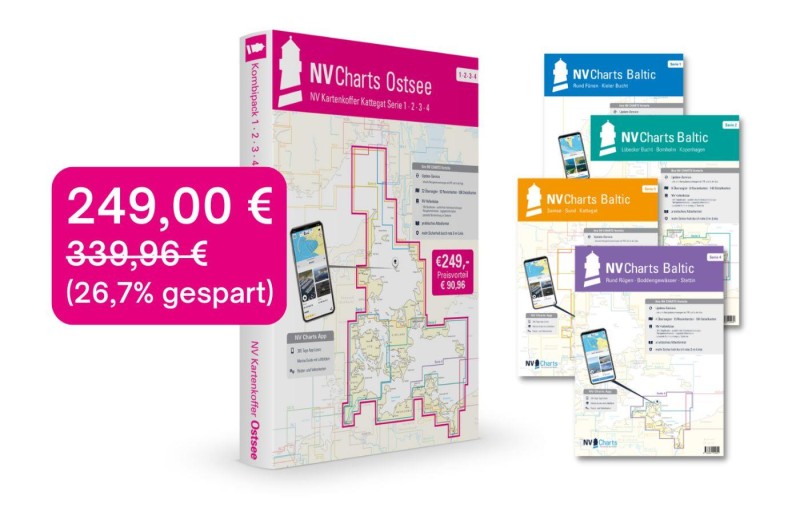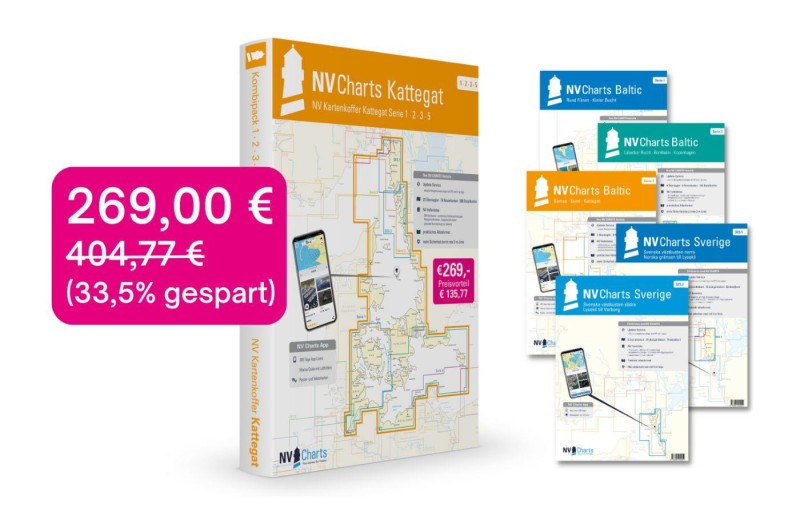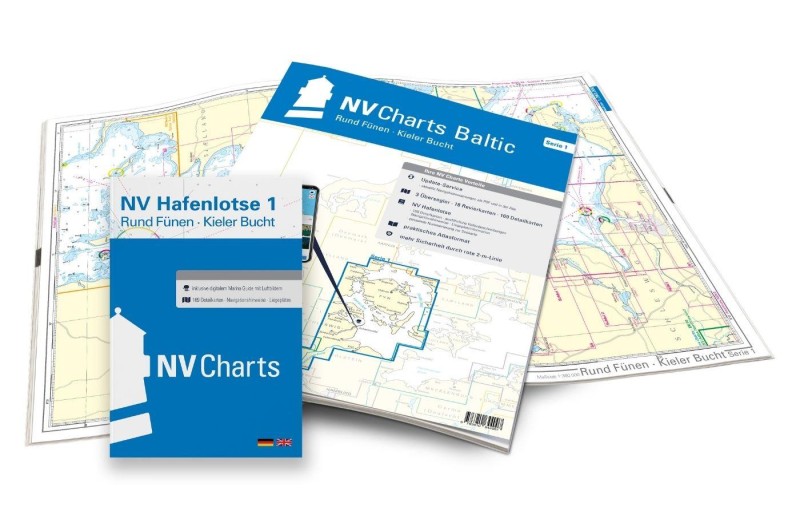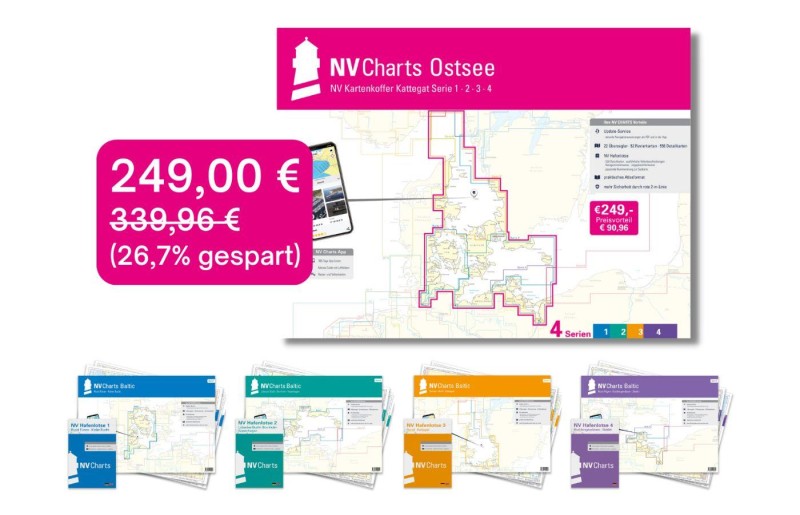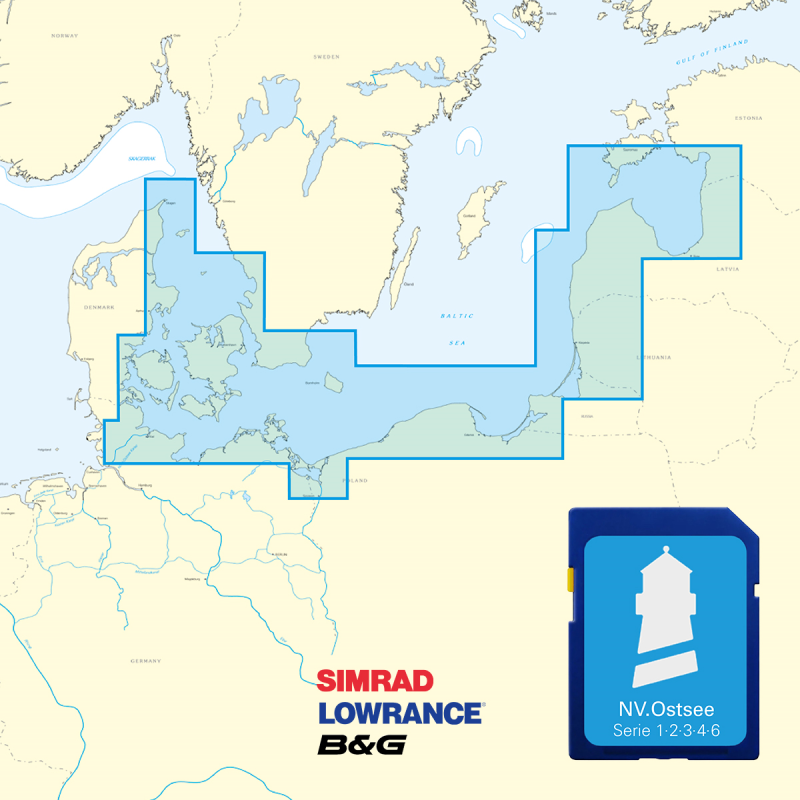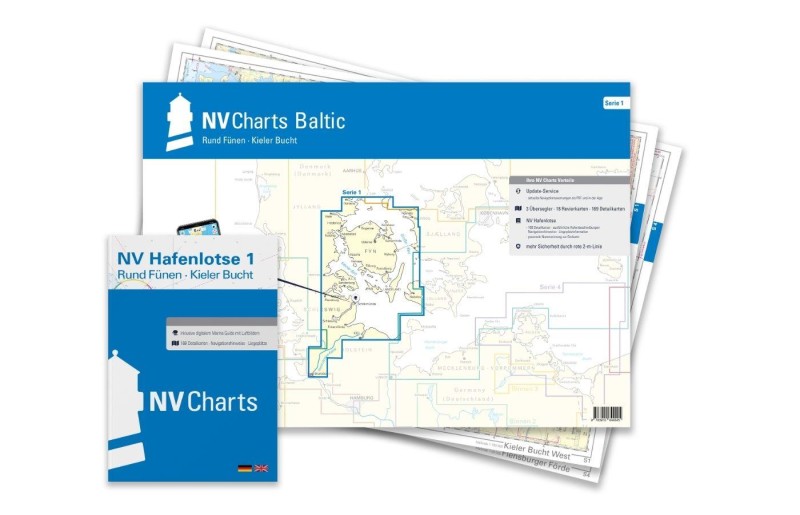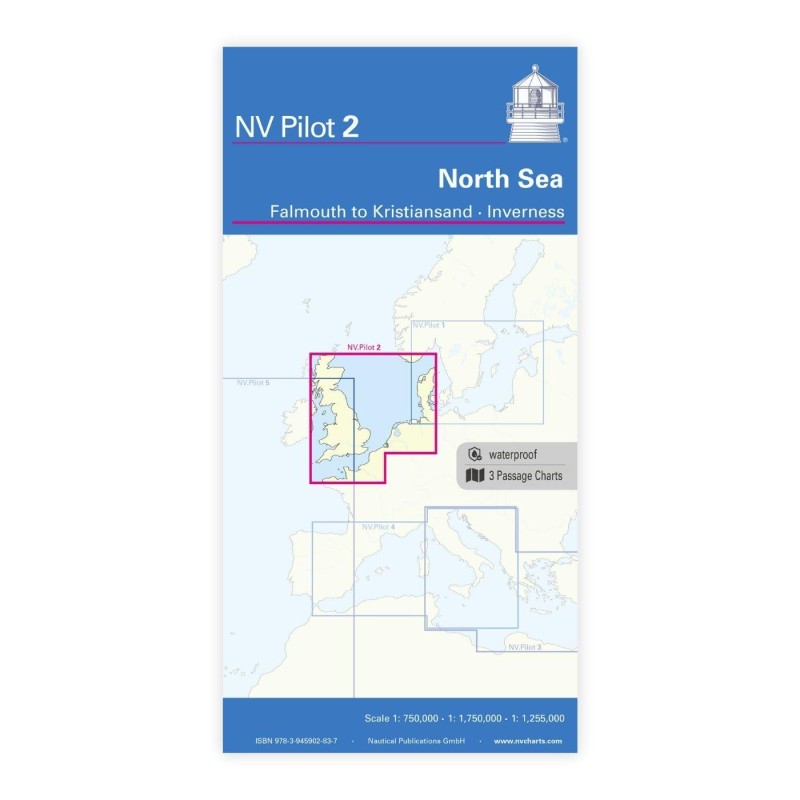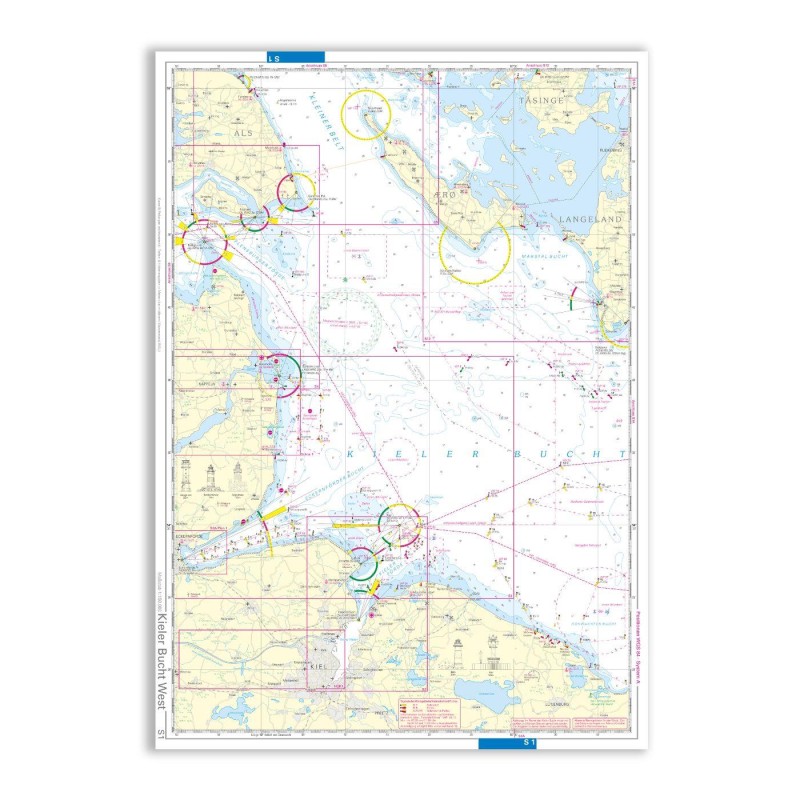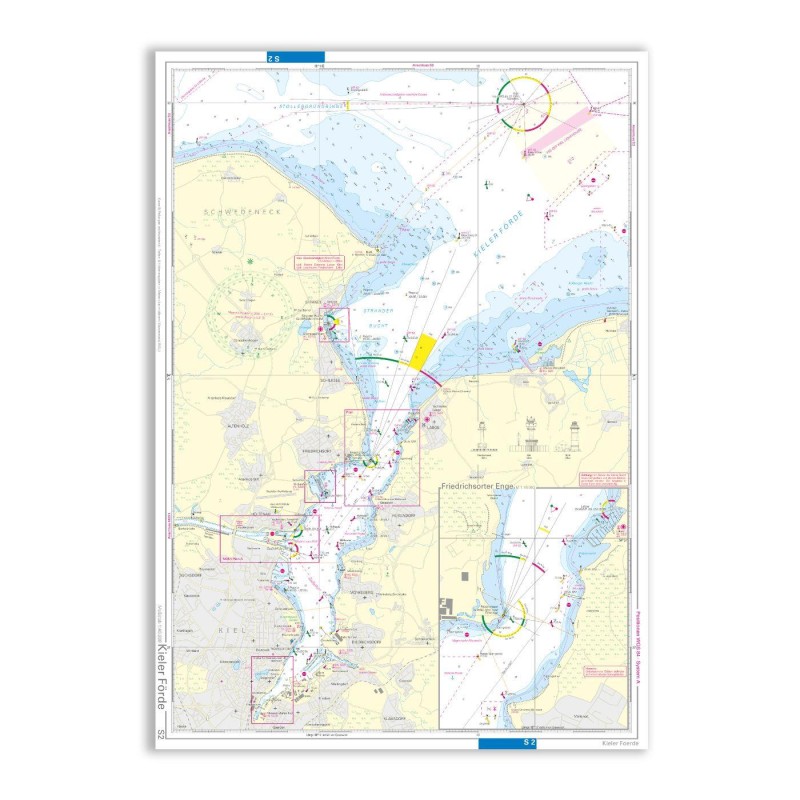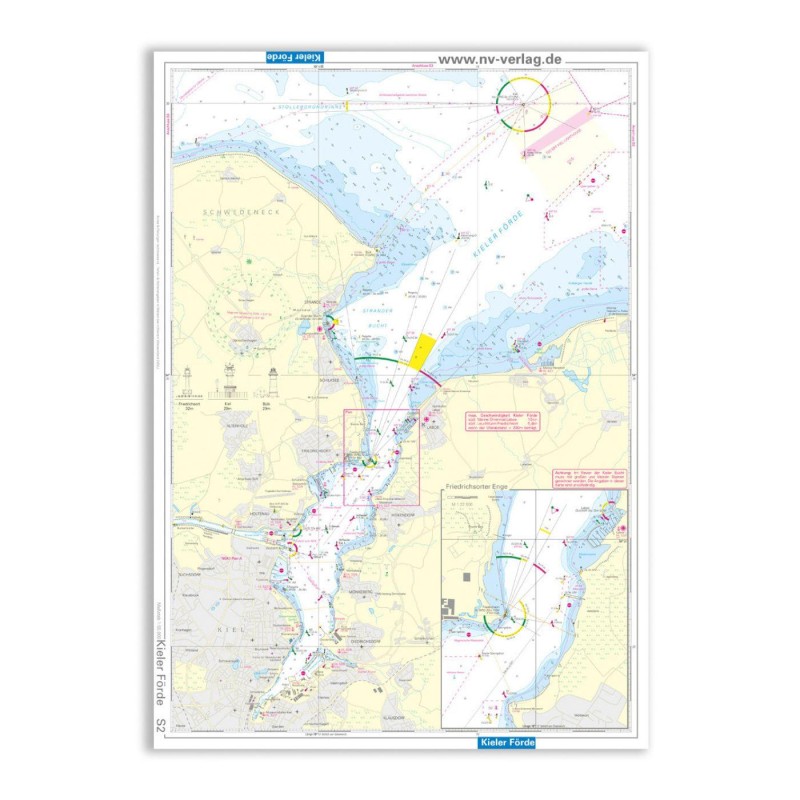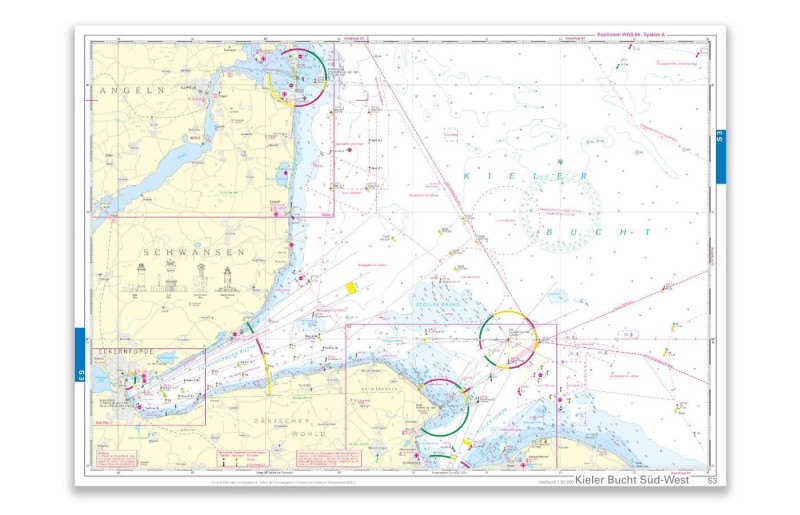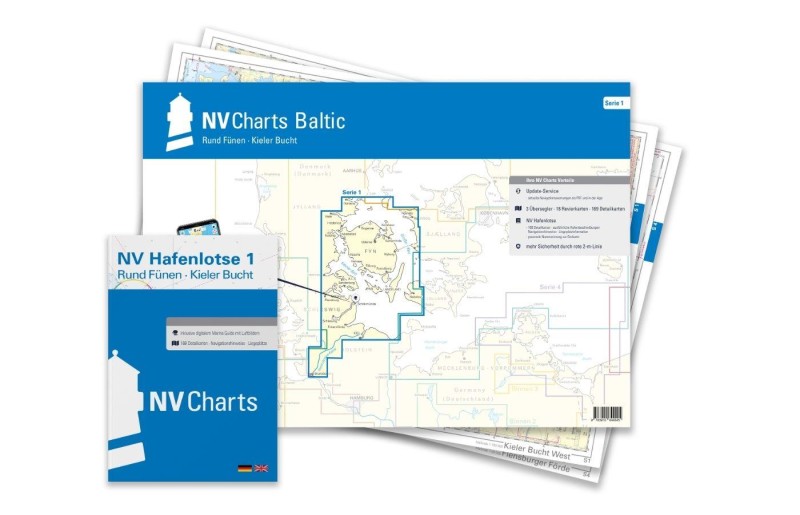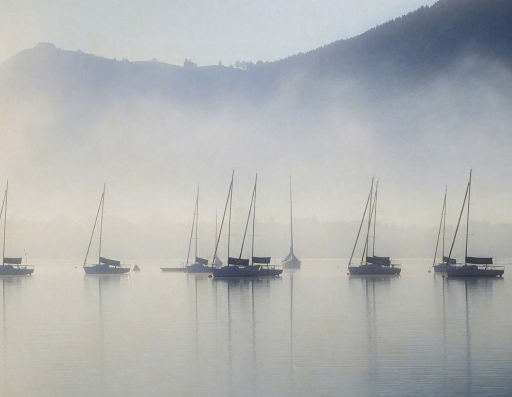Eckernförde - Yachthafen SCE
Marina near Eckernförde (Borby)
Latitude
54° 28’ 32.9” NLongitude
9° 51’ 13.3” EDescription
Yacht harbor near Eckernförde near the naval harbor in the western end of Eckernförde Bay.
NV Cruising Guide
Navigation
The approach to the harbors of Eckernförde is unproblematic day and night. Head towards Borby church at 310°. Turn north towards the SCE marina, but only once you have kept a sufficient distance from the pier of the marina. The entrance is illuminated at night. The SVAOE anchorage is located directly to the west of the marina.
Berths
The Eckernförde marina (water depth: 2-3 m) is a modern facility near the Borby district with the clubhouse of the Eckernförde Sailing Club (SCE). Guests register with the harbor master at the SCE office.
Free berths are displayed in real time under the following link. Clicking on one of the green dots will display the free duration and box size.
https://his.segelclub-eckernfoerde.de/html/SH_013.html
Surroundings
The beautiful little town with pedestrian zone offers almost all
amenities. However, the SCE marina (with wifi connection) is 1.5 km
from the center. There is a yacht accessories shop right by the
wooden bridge.
The sailing club has a popular restaurant with a view of the harbor
and also offers a washing machine and dryer.
Harbor master's office hours:
April 01 to Ansegeln
Monday free
Tuesday - Saturday 8.00 - 12.00
13.00 -17.00
Sunday
8.00 - 14.00
May 7 until sailing off
Monday free
Tuesday - Friday 8.00 - 12.00
13.00 - 17.00
Saturday
8.00 - 12.00 13.00
- 18.00
Sunday
8.00 - 12.00
Sailing off until October 31
Monday free
Tuesday - Saturday 8.00 - 12.00
13.00 - 17.00
Sunday
8.00 - 14.00
01. November to 31. March
Monday - Friday 8.00 -
12.00
During off-duty hours, please contact our secretary's office at the
following times:
Monday, Tuesday and Thursday
10.00-12.30 and 13.00 -16.00
The office is currently staffed on Tuesday
and Thursday at the above
times.
NV Land Guide
The "Day of Eckernförde" is the name given to a battle in the history of Schleswig-Holstein in which Danes and Schleswig-Holsteiners clashed on April 5, 1849. Among the seven attacking Danish sailing and steam ships in Eckernförde Bay was one of the largest sailing ships of the time: the "Christian VIII". She carried 84 cannons.
The victorious Danes offered the German gunners a safe target for a long time. The anchors on the 48-gun "Gefion" and the "Christian VIll." were weighed too late, and the sailing ships, which were soon rendered unmaneuverable by the two batteries from Eckernförde, could no longer be towed out of the danger zone in time by the Danish steamers called to help, because they too were under heavy fire from the entrenchments. At 1 p.m., the commander-in-chief of the "Christian VIII", Paludan, hoisted the parliamentary flag and tried to negotiate a free withdrawal. He threatened to fire on the city otherwise.
Despite the threats, the battle continued after a brief pause in firing, and the Danes finally had to admit defeat towards evening. But before the ship could be handed over to the Schleswig-Holsteiners, a harrowing experience occurred, according to eyewitness reports. While the Danish prisoners were still leaving the ship, the "Christian VIII", which had drifted onto the beach, caught fire and exploded in a huge fireball. Schleswig-Holstein soldiers and fishermen from Eckernförde, who had tried to save the Danish soldiers still on the ship from the impending explosion, also lost their lives. The fallen were buried in a mass grave in the Eckernförde cemetery. Almost 1000 Danish soldiers were taken prisoner.
The local history book of the district of Eckernförde (2nd edition 1928, 3rd edition 1972) by Willers Jessen and Christian Kock describes in detail an event that hit the people of Eckernförde particularly hard: the great storm surge of 1872. A storm on 12 November of the same year developed into a hurricane the next day, which drove huge masses of water into the Eckernförde Bay. Roads were flooded and houses collapsed. But suddenly - although the storm had not abated - the water level dropped again. The water had found an outlet for a short time because the dam to Windebyer Noor had broken. A newspaper report at the time describes the situation: "The initially narrow opening widened with terrible speed and the water shot down into the Noor in a huge torrent. The terrible force of the current now drove the boats irresistibly away, and people followed their path with great excitement, wondering whether they would pass the dam or break up. It almost took one's breath away when a boat with two people followed the terrible current. Fortunately, the men jumped out in time and were rescued. Later, a larger boat with two fishermen passed through, and that didn't cost any lives either. In an hour and a half, the whole dam was gone and the gray waves with the white crests went over it."
When the Noor was filled, the water in the streets rose so high that the houses could only be reached by boat. Many people drowned or were killed by collapsing houses. Individual fates such as the following were described in detail in the newspaper reports: There was a hut on the beach at Sophienruhe where the worker Wegener lived. The tide rose so high that Wegener and his wife had to seek refuge on the floor of the house. From here, they both looked fearfully into the wild element. The floods pushed the boards out of the half-timbered walls and the furniture floated away. As the armchair floated past, Wegener leaned out of the hatch in the floor, fell and drowned, the woman was rescued."
No other Baltic Sea town has been hit by disasters as often as Eckernförde. Storm surges, famines, town fires and the plague, which claimed the lives of over 500 Eckernförde residents during the Thirty Years' War, were among the blows of fate for the town caught between German and Danish interests. While in Aabenraa, under German occupation, the singing of Danish folk songs was forbidden with severe penalties (see Aabenraa), around 1855 in Eckernförde under Danish rule, the singing of the Schleswig-Holstein song was punished with at least ten days in prison. On both the Danish and German sides, however, such bans tended to fuel national sentiment.
Eckernförde is not a prime example of a place with a lot of medieval architecture today. It has been hit too often by storm surges and fires for that. But what remains of the old town is well worth seeing. Kattsund, Rosengang, Fischerstraße, Pastorengang and Rektorgang have a number of listed houses. However, if you dock in the marina, you have to walk almost two kilometers to get there. Those who dock in the outer harbor near the old town save themselves the walk, but also have to do without all the amenities of the marina in front.
Those who also walk along the outer harbor approach the city from its best side. The way into the city leads over the wooden jetty that separates the inner and outer harbors. When the traditional ships "squeeze" through the opening of the picturesque bascule bridge, there is not much space between the sides of the ship and the bridge - a spectacle for which many people leave the bridge to be on the safe side. Before entering the pedestrian bridge, you pass the monument to the Great Elector in the green area along the shore of Borby. The bronze-cast statue originally stood in Pillau, one of Eckernförde's sponsor towns, and has stood on Vogelsang for over 33 years.
Here, on the north bank of the harbor, was the castle on today's Petersberg, under whose protection the small town on the fjord developed. The castle was first mentioned in 1197 in the name of the knight Godescaceus de ekerenvorde and in Waldemar's land register (Ykernaburgh = squirrel castle). However, the castle was completely destroyed in 1416 during the war between King Erich of Pomerania and Henry IV, Duke of Schleswig-Holstein. If you would like to find out more about the history of the town, you should not miss a visit to the local history museum on Rathausmarkt. In the rooms of the former Eckernförde town hall, the Battle of Eckernförde is also covered in detail. And because fishing was one of the most important sources of income for the people of Eckernförde, the history of this profession is shown using fishing equipment. In the 19th century, the heyday of fishing and fish processing, there were more than 30 (!) smokehouses in Eckernförde, which also processed the catches of other Baltic Sea towns.
The emerging "fashion" of bathing in the Baltic Sea and, in the eyes of some contemporaries, exposing oneself more and more "indecently", made the Eckernförde coffers more and more popular from the middle of the 19th century. In the early years of this bathing life, however, things were usually very civilized. This was ensured by appropriate clothing, bathing carts and cabins and the lifeguards, who strictly observed the separation of the sexes. The historical bathing costumes are on display in the local museum. The town was officially declared a Baltic seaside resort in 1923 and is still a tourist attraction in the summer months.
One of the town's sights is St. Nicolai's Church in Kieler Straße, a long pedestrian street. The rather simple building contains a wealth of art treasures inside. The painting of the vault dates back to 1578 and the bronze baptismal font was made ten years later. Hans Gudewerdt the Younger, an important Baroque woodcarver, created the altar in 1640. The famous alchemist St. Germain found his final resting place under the tiles of this church after a life full of adventures throughout Europe (see also Fleckeby). The plague, which claimed the lives of more than 500 people from Eckernförde, is commemorated by the "Sündflutbild", a painting created in 1632 in the south aisle of St. Nicolai's Church.
The oldest part of Borby Church on Fischerkoppel dates back to the 12th century. The relief carved in granite above the south portal dates from the same period. A special feature is the Romanesque baptismal font from Gotland from the 13th century.
In the Kurpark between Preußerstraße and Südstrand, a replica of the figurehead of the Danish frigate "Gefion" commemorates the naval battle of Eckernförde. The covered seawater wave pool is also located here. Next to the town hall, which is located slightly north of the indoor pool and where numerous music and theater performances take place in summer, stone slabs have been laid out in a chessboard pattern for the game of kings. Oversized chess pieces are moved by the players on the large chess squares. Anyone who feels the need to sit down in an armchair and read for a while will find the spa rooms provided for this purpose in the town hall. Numerous seating areas in the spacious library rooms make it possible to select books in peace.
The Baltic Sea Info Center 'OIC' is located directly on the beach to the south of the town harbour, where not only the little crew members can immerse themselves in the exciting world under water. From the coastal landscape to the depths, the diverse marine life is vividly and vividly presented in the large touch tank and other aquariums. In addition, further adventure programs are offered under the motto "Experience the sea...".
The hiking trail on Windebyer Noor to the west of the harbour is ideal for walks. You can reach this hiking trail via Noorstraße, which leads to the main road 76 at the end of the inland port. The environmental information center, which is well worth a visit, is also home to what is probably Germany's largest squirrel trapping station. At times, up to 160 of these cute animals are kept here in large cages, given medical treatment and then released back into the wild. We also recommend a hike to the Altenhof cliffs on the southern shore via the promenade and the southern beach. The SCE harbor is a good starting point for a hike to Hemmelmark beach on the northern shore of the bay. However, the military area on the first section of this hike is not a feast for the eyes.
Marina Information
| Max Depth | 3 m |
Contact
| Phone | +49 4351 879187 |
| Please enable Javascript to read | |
| Website | https://www.segelclub-eckernfoerde.de/ |
Surroundings
Electricity
Water
Toilet
Shower
Restaurant
Playground
Crane
Internet
Ramp
Garbage
Comments
You can add comments with the NV Charts App (Windows - iOS - Android - Mac OSX).
You can download the current version at nvcharts.com/app.
Buy nv charts covering this place Clicking one of the products will open the nv charts shop.
Places nearby
Related Regions
This location is included in the following regions of the BoatView harbour guide:
